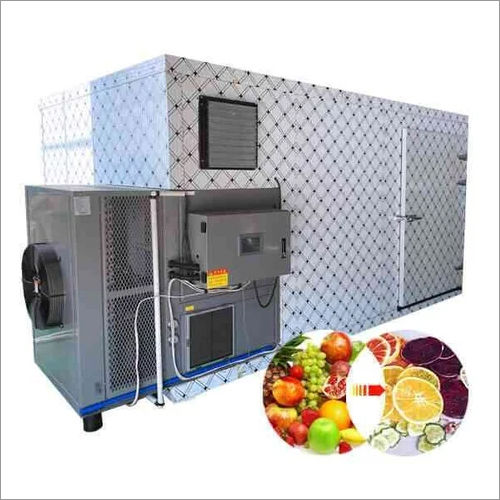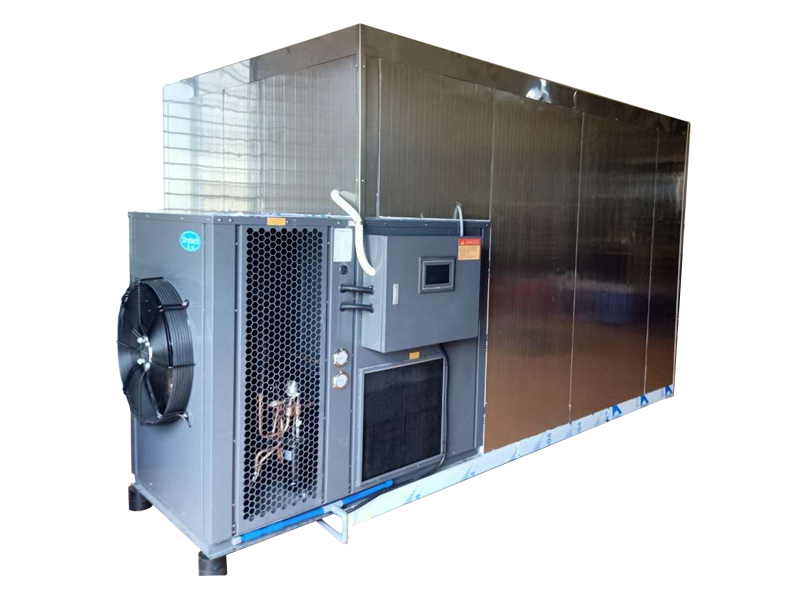
Content Menu
● Introduction
● Understanding Heat Pump Food Dryer Technology
>> How Heat Pump Food Dryers Work
● Advantages of Heat Pump Food Dryers
>> Energy Efficiency
>> Temperature Control and Product Quality
>> Dehumidification Capabilities
>> Environmentally Friendly
● Applications of Heat Pump Food Dryers
>> Fruit and Vegetable Drying
>> Herb and Spice Processing
>> Meat and Fish Drying
>> Grain and Cereal Drying
● Innovations and Future Trends
>> Multi-Stage Heat Pump Systems
>> Integration with Renewable Energy Sources
>> Smart Control Systems
● Conclusion
● Frequently Asked Questions
>> 1. Q: What is the main advantage of using a heat pump food dryer?
>> 2. Q: Can heat pump food dryers be used for all types of food products?
>> 3. Q: How do heat pump food dryers compare to traditional hot air dryers in terms of drying time?
>> 4. Q: Are heat pump food dryers suitable for small-scale or home use?
>> 5. Q: What maintenance is required for heat pump food dryers?
Introduction
In the ever-evolving world of food preservation, heat pump food dryers have emerged as a game-changing technology. These innovative devices combine energy efficiency with superior drying capabilities, revolutionizing the way we preserve food. This article delves into the intricacies of heat pump food dryers, exploring their technology, advantages, and applications in various industries.
Understanding Heat Pump Food Dryer Technology
Heat pump food dryers operate on a sophisticated principle that sets them apart from conventional drying methods. At the core of this technology is a heat pump system, which efficiently transfers heat from one location to another using a refrigerant.
How Heat Pump Food Dryers Work
1. Air Dehumidification: The process begins with moist air from the drying chamber being drawn into the heat pump system.
2. Heat Extraction: The air passes over the evaporator coil, where the refrigerant absorbs heat and moisture from the air, effectively dehumidifying it.
3. Heat Amplification: The compressor increases the pressure and temperature of the refrigerant, amplifying the extracted heat.
4. Heat Transfer: The hot refrigerant flows through the condenser, where it releases its heat to a separate air stream.
5. Drying Process: This heated, dry air is then circulated back into the drying chamber, where it removes moisture from the food products.
This closed-loop system allows for precise control over temperature and humidity, making heat pump food dryers highly efficient and versatile.

Advantages of Heat Pump Food Dryers
Heat pump food dryers offer numerous benefits over traditional drying methods, making them increasingly popular in various industries.
Energy Efficiency
One of the most significant advantages of heat pump food dryers is their exceptional energy efficiency. By recirculating and reusing heat, these systems can achieve energy savings of up to 60-70% compared to conventional hot air dryers. This not only reduces operational costs but also minimizes the environmental impact of the drying process.
Temperature Control and Product Quality
Heat pump dryers operate at lower temperatures, typically between 20°C and 60°C. This gentle drying process helps preserve the nutritional value, color, flavor, and texture of food products. The ability to maintain consistent, low temperatures is particularly beneficial for heat-sensitive foods, ensuring high-quality end products.
Dehumidification Capabilities
Unlike traditional dryers, heat pump systems can effectively remove moisture from the air regardless of ambient conditions. This makes them suitable for use in various climates and seasons, providing consistent drying performance year-round.
Environmentally Friendly
Heat pump food dryers use closed-loop systems that do not release emissions into the atmosphere. Additionally, their energy efficiency contributes to a reduced carbon footprint, aligning with sustainable practices in food production.

Applications of Heat Pump Food Dryers
The versatility of heat pump food dryers makes them suitable for a wide range of applications across various industries.
Fruit and Vegetable Drying
Heat pump dryers excel in preserving fruits and vegetables, maintaining their nutritional value and appearance. They are particularly effective for drying berries, apples, mangoes, and leafy greens, producing high-quality dried products with extended shelf life.
Herb and Spice Processing
The gentle drying process of heat pump systems is ideal for preserving the delicate flavors and aromatic compounds of herbs and spices. This technology ensures that dried herbs and spices retain their essential oils and potency.
Meat and Fish Drying
Heat pump dryers provide precise control over temperature and humidity, crucial for safely drying meat and fish products. This technology helps prevent bacterial growth while preserving the texture and flavor of dried meats and fish.
Grain and Cereal Drying
For grains and cereals, heat pump dryers offer efficient moisture removal without the risk of overheating. This helps maintain the quality of the grains and prevents issues like germination or mold growth during storage.
Innovations and Future Trends
The field of heat pump food drying continues to evolve, with ongoing research and development focusing on enhancing efficiency and expanding applications.
Multi-Stage Heat Pump Systems
Researchers are exploring multi-stage heat pump dryers that can achieve higher temperatures and greater energy efficiency. These advanced systems promise to broaden the range of products that can be dried using heat pump technology.
Integration with Renewable Energy Sources
There is growing interest in combining heat pump dryers with renewable energy sources like solar power. This integration could further reduce the environmental impact of food drying processes and make the technology more accessible in remote areas.
Smart Control Systems
The incorporation of smart control systems and IoT (Internet of Things) technology is enhancing the precision and automation of heat pump dryers. These advancements allow for real-time monitoring and adjustment of drying parameters, optimizing product quality and energy efficiency.
Conclusion
Heat pump food dryers represent a significant leap forward in food preservation technology. Their energy efficiency, product quality preservation, and versatility make them an invaluable tool in the food processing industry. As research continues and technology advances, we can expect heat pump food dryers to play an increasingly important role in sustainable food production and preservation.

Frequently Asked Questions
1. Q: What is the main advantage of using a heat pump food dryer?
A: The main advantage is energy efficiency, with potential savings of up to 60-70% compared to conventional dryers, while also preserving food quality.
2. Q: Can heat pump food dryers be used for all types of food products?
A: While heat pump dryers are versatile, they are particularly effective for fruits, vegetables, herbs, spices, meats, and grains. Some heat-sensitive products may require specialized settings.
3. Q: How do heat pump food dryers compare to traditional hot air dryers in terms of drying time?
A: Heat pump dryers often have longer drying times compared to high-temperature hot air dryers, but they compensate with better energy efficiency and product quality preservation.
4. Q: Are heat pump food dryers suitable for small-scale or home use?
A: While primarily used in industrial settings, smaller heat pump dryers are becoming available for small businesses and home use, offering the same benefits on a smaller scale.
5. Q: What maintenance is required for heat pump food dryers?
A: Regular maintenance includes cleaning the drying chamber, checking and replacing air filters, and ensuring the refrigerant system is functioning correctly. Professional servicing may be required periodically to maintain optimal performance.












